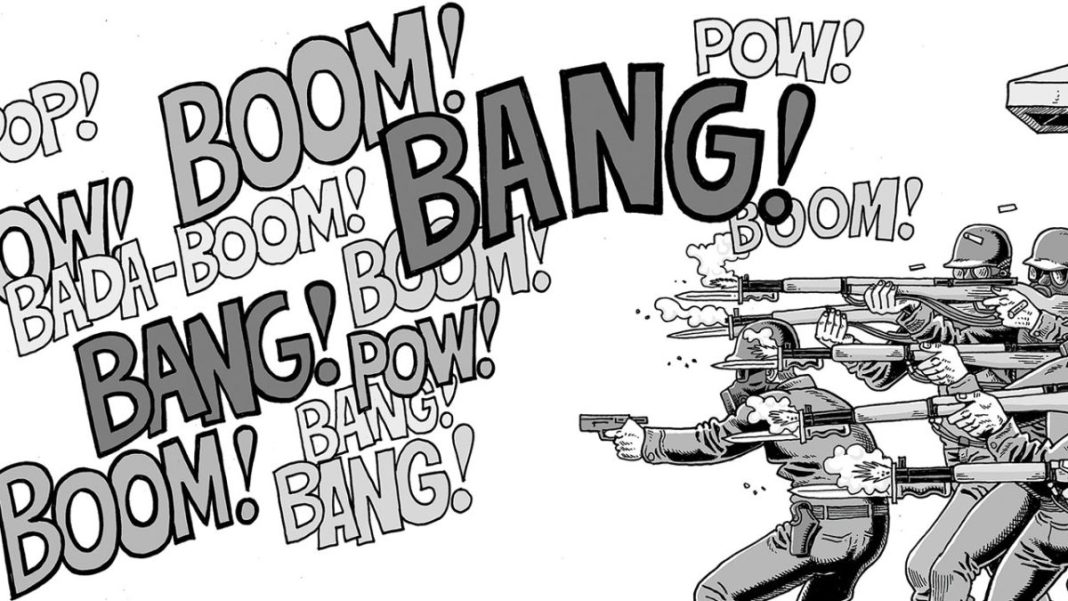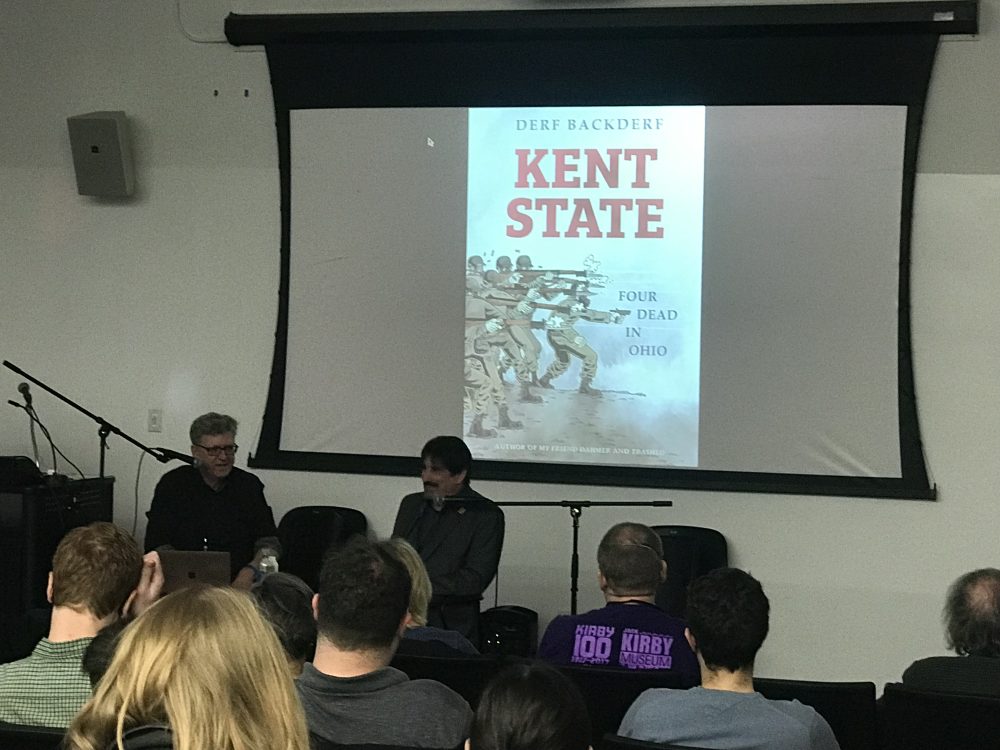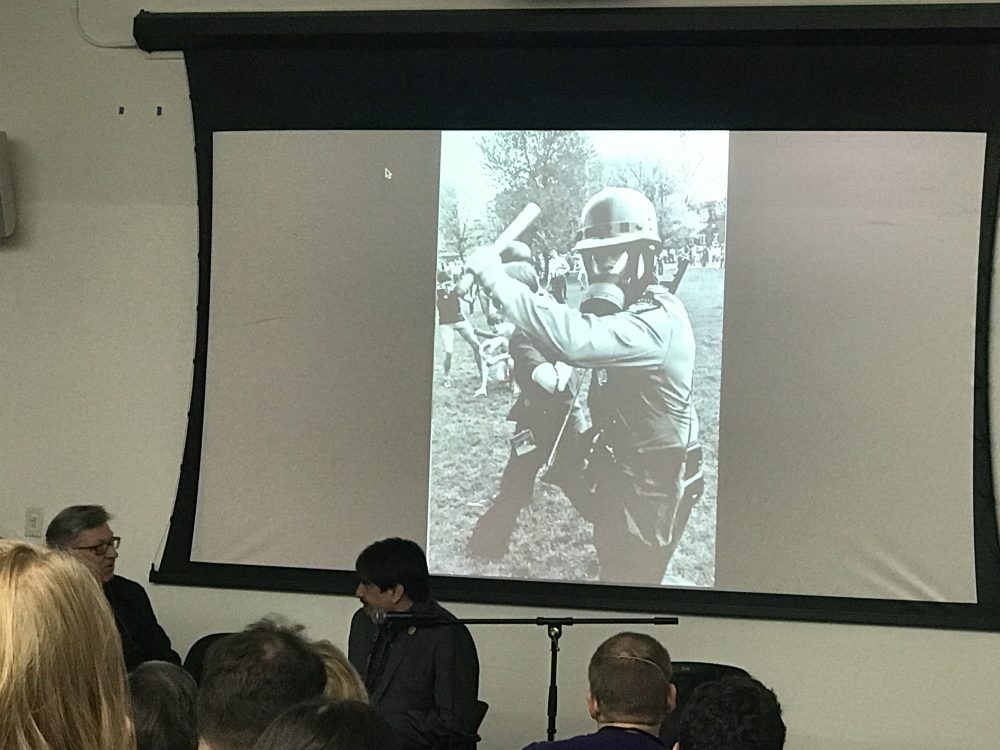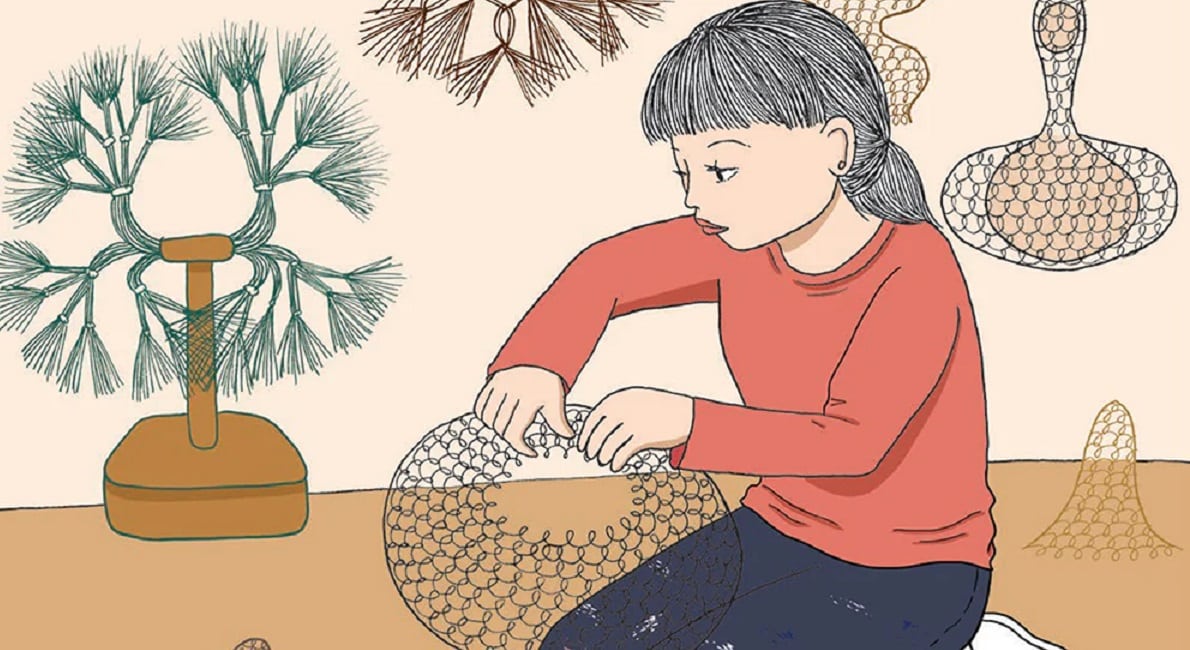If you quickly flip through Derf Backderf’s 2020 graphic novel Kent State: Four Dead in Ohio, one thing becomes immediately apparent: it’s a thoroughly and painstakingly well-researched book. The amount of detail present on the pages that show the Kent State campus and its surrounding student hangout and dorm areas is astonishing and allows for readers to feel the weight of history as it’s laid out in the story.
Backderf spoke on this and on the creative process behind his book at this year’s MoCCA Fest, which took place at the Metropolitan Pavilion on April 2nd and 3rd. The talk focused, in detail, on the layered and exhaustive work that went into the creation of his non-fiction graphic novel about the May 4th, 1970 shooting at Kent State by the Ohio National Guard that left four dead and nine wounded, a challenge unto itself given the iconic quality of the event in modern American history.
Research was the reigning topic of discussion during the talk. The Kent State shooting carries such an overwhelming amount of trauma, politics, culture, and activistic identity in its narrative that getting the events down on paper right required nothing less than a rigorous investigative approach. Backderf’s journalism experience came to the fore here, informing the audience on his decision to dive into every resource available with the urgency of a journalist that’s hungry for a story.
Backderf stated, “there is so much information available now that everything’s been digitized, especially after the government unsealed the Kent State records regarding the shooting, that it can be both a good thing and perhaps a very difficult thing to deal with too.” With so much to sift through, categorize, and organize into a coherent story, a multitude of sources can mean a multitude of stories competing against each other for attention.
“I decided to focus on the four students that were shot dead on May 4, 1970 because it gave me a structure I could work with,” added Backderf, speaking on the challenges of prioritizing certain events to tell a reasonably contained story. “I started with interviews and worked from there, later visiting the campus to get a sense of place for what I would later put on the page.”
Sticking close to the days that led up to the violence, Backderf explained, also helped getting the story to come through in a way that humanized the four students at the center of the book. There wasn’t a desire to keep a distance from them. In fact, by delving into their stories, the tragedy is given a stronger sense of authenticity that accounts for the complexity behind both the Ohio National Guard’s behavior and the student reaction to their presence.
The digital archives and collections, Backderf emphasized, force upon researchers the need for discipline. There comes a point where one has to draw a line and trust that enough research was done to put into a comics script and move on. He alluded to a way one could come terms with the amount of research. Backderf stated, “I wanted to capture a history you could feel. This turned me into an obsessive over the actual look of places, the atmosphere. I knew people who were in Kent State would read this and so things had to be right.” That feeling acted as a goal-setter, something that helped him determine when he had done enough to start putting ink to paper.
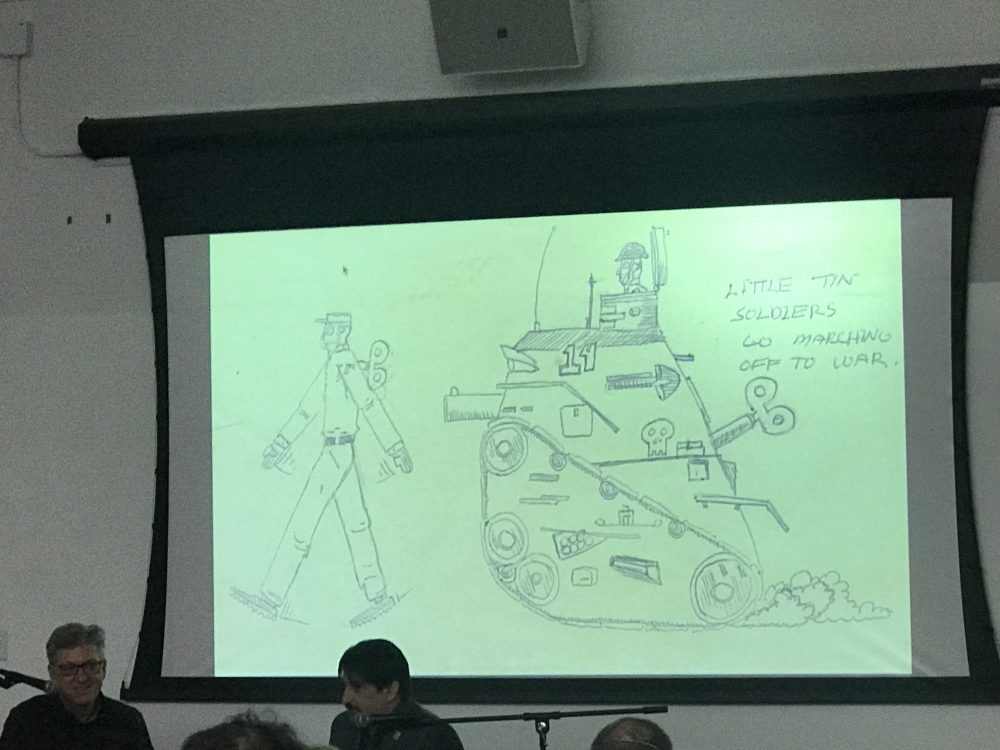
This focus on authenticity definitely makes it into the book and, one could argue, becomes one of its defining characteristics. This part of the discussion led to one of the most important observations that can be made about non-fiction in comics: accounting for the unseen parts of history.
During his discussion of the process of illustrating the killing of the four students and the wounding of nine others by the Ohio National Guard, Backderf brought to our attention the fact that everyone hit the ground or ran away when the shooting started. Photographers, reporters, anyone trying to document the encounter just stopped documenting. That’s some 13 to 14 seconds that went mostly unseen by anyone other than those that were there. Very few pictures, if any, were taken during that short timespan.
Backderf took this opportunity to state that “the power of comics lies in creating the unseen.” With research and careful reconstruction based on testimony and news articles, comics creators can piece together that which history has no visual referent for due to the circumstances of the event. Backderf added that “this makes comics one of the few mediums that can account for those moments, when the visuals didn’t get a chance be captured via camera or newsreel.”
Comic creators, journalists, historians, all kinds of storytellers should take this to heart. There are things comics can achieve by marrying serious research and illustration, specifically, that no other medium can lay claim to. There are certain moments in the storytelling process that creators can take full advantage of to make their own contributions to history. Kent State: Four Dead in Ohio is a superior example of that.
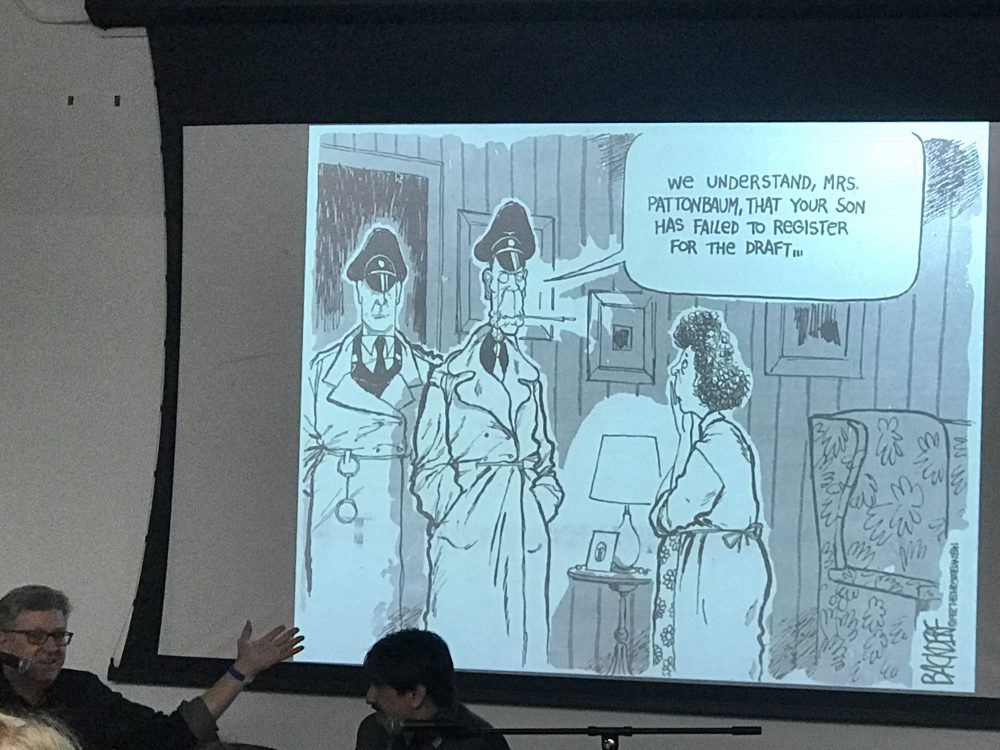
This part of the talk extended to the decision to present the shooting with all the violence intact. The balance between forensic research and artistic license is a delicate one, but Backderf argued that portraying the ugliness of the event adds other dimensions to our appreciation of the tragedy. The goal is to reach a deeper understanding of the shooting and what led to it, not to glorify or to satisfy some morbid curiosity. The intention is to facilitate a thought process that can help us understand what happened.
Derf Backderf’s talk was illuminating, especially on the possibilities inherent in non-fiction comic book storytelling. To claim comics have the power to contribute to history by accounting for the unseen is to make people consider the medium as something that goes beyond the juxtaposition of art and text. Looking into the past in comics, Backderf basically declared, means shedding a light on things people never thought they’d ever get a chance to see. And that is quite special.


